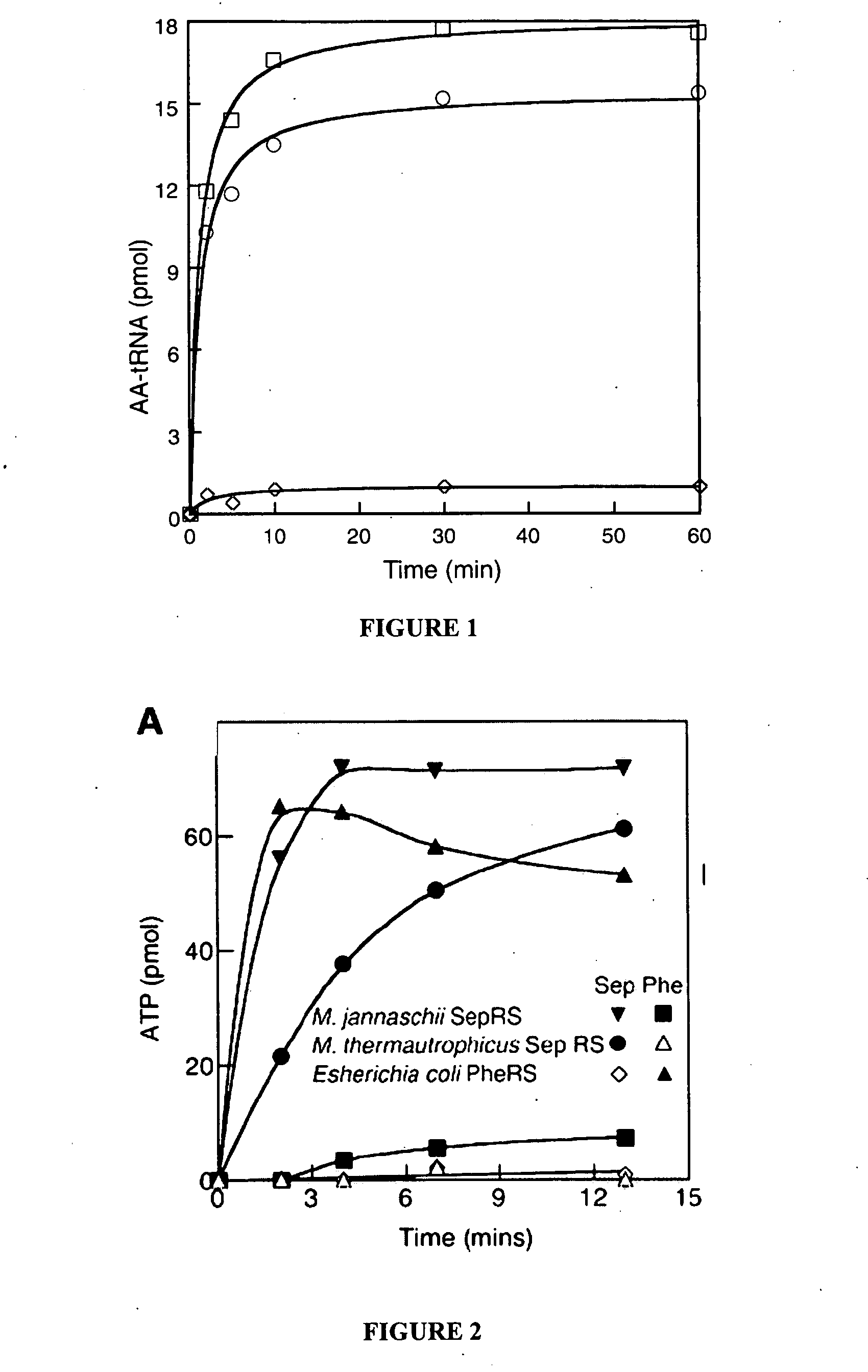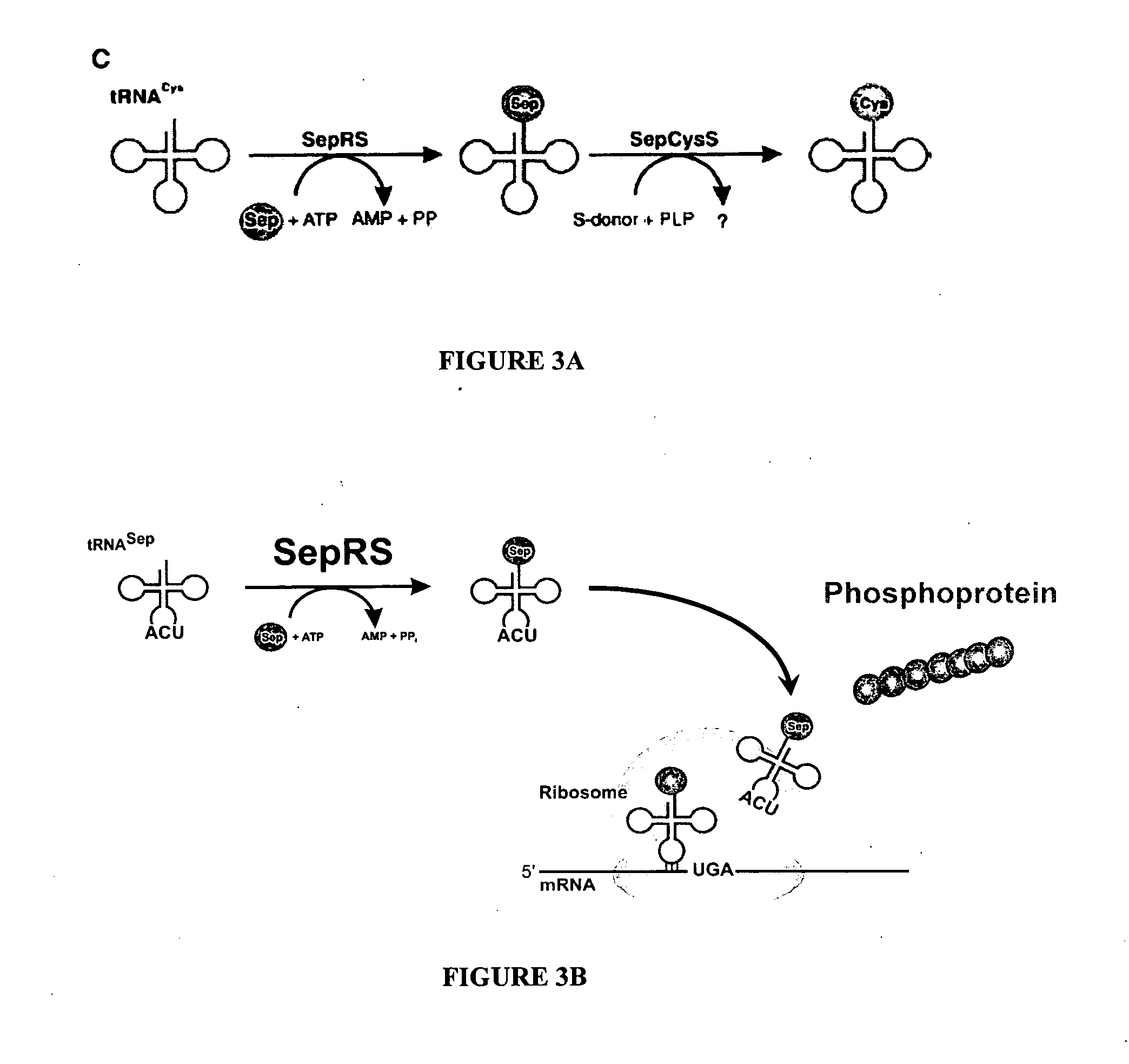Site specific incorporation of phosphoserine into polypeptides using phosphoseryl-tRNA synthetase
a phosphoserine and polypeptide technology, applied in the field of site specific phosphorylation of proteins or peptides in vitro, can solve the problems of large intracellular changes, increased or decreased activity of certain metabolic pathways, and complex network underlying phosphorylation
- Summary
- Abstract
- Description
- Claims
- Application Information
AI Technical Summary
Benefits of technology
Problems solved by technology
Method used
Image
Examples
example 1
Identification of Genes Encoding tRNASep and SepRS Activity
[0073] Several methanogenic archaea lack cysteinyl-transfer RNA (tRNA) synthetase (CysRS), the essential enzyme-that provides Cys-tRNACys for translation in most organisms. Partial purification of the corresponding activity from Methanocaldococcus jannaschii indicated that tRNACys becomes acylated with O-phosphoserine (Sep) but not with cysteine. Further analyses identified a class II-type O-phosphoseryl-tRNA synthetase (SepRS) and Sep-tRNA:Cys-tRNA synthase (SepCysS). SepRS specifically forms Sep-tRNACys, which is then converted to Cys-tRNACys by SepCysS. Comparative genomic analyses suggest that this pathway, encoded in all organisms lacking CysRS, can also act as the sole route for cysteine biosynthesis. This was proven for Methanococcus maripaludis, where deletion of the SepRS-encoding gene resulted in cysteine auxotrophy. As the conversions of Sep-tRNA to Cys-tRNA or to selenocysteinyl-tRNA are chemically analogous, th...
PUM
| Property | Measurement | Unit |
|---|---|---|
| pH | aaaaa | aaaaa |
| pH | aaaaa | aaaaa |
| pH | aaaaa | aaaaa |
Abstract
Description
Claims
Application Information
 Login to View More
Login to View More - R&D
- Intellectual Property
- Life Sciences
- Materials
- Tech Scout
- Unparalleled Data Quality
- Higher Quality Content
- 60% Fewer Hallucinations
Browse by: Latest US Patents, China's latest patents, Technical Efficacy Thesaurus, Application Domain, Technology Topic, Popular Technical Reports.
© 2025 PatSnap. All rights reserved.Legal|Privacy policy|Modern Slavery Act Transparency Statement|Sitemap|About US| Contact US: help@patsnap.com



